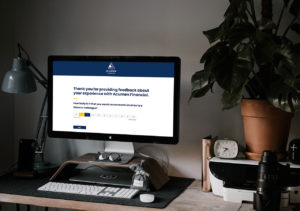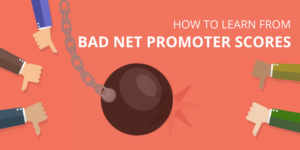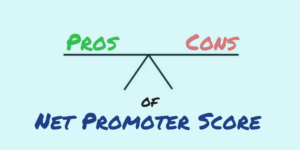Net Promoter Score® (NPS) is a trademarked metric between -100 and 100 that measures the likelihood of a company’s customers to promote the brand through new customer references or/and repeat business.
NPS also stands for the Net Promoter System®, a trademarked system and framework that was built around the Net Promoter Score. It is a model that essentially tries to tie a corporation’s bottom line with its customers’ happiness and satisfaction with the company’s products and services. This system aims at managing corporate profits and sustainability through a customer experience lens.
Why NPS Score is Important
Net Promoter Score (NPS) has become a crucial metric for businesses seeking to understand and improve customer satisfaction. This single number, derived from a simple question, holds significant value for several reasons:
1. Customer Loyalty Indicator
The primary purpose of NPS is to gauge customer loyalty. By asking customers how likely they are to recommend a product or service to others, businesses can identify their most loyal advocates. A high NPS indicates satisfied customers who are not only likely to make repeat purchases but also to actively promote the brand.
2. Word-of-Mouth Marketing
Customers who give high NPS ratings are more likely to engage in positive word-of-mouth marketing. The rise of social media has made it easier than ever for loyal customers to become brand ambassadors. A high NPS score is reflective of your customers’ willingness to use those channels to promote your brand and bring in new customers.
3. Identifying Areas for Improvement
While a high NPS is desirable, a low score can be equally valuable. It serves as an alert that something may be amiss in the customer experience. Businesses can use this feedback to identify specific pain points and address issues that might be hindering customer satisfaction and loyalty.
4. Benchmarking Against Competitors
NPS allows businesses to benchmark themselves against industry competitors. Understanding where your NPS stands in comparison to others in the market provides valuable context. It can inspire a drive for continuous improvement and innovation to stay ahead in the competitive landscape.
5. Predictive of Business Growth
Research has shown a strong correlation between high NPS and business growth. Satisfied customers not only tend to make more purchases themselves but also contribute to the growth of the customer base through referrals. NPS, therefore, becomes a leading indicator of future business success.
Why Should You Use NPS Score?
Implementing Net Promoter Score (NPS) as a key performance indicator offers numerous benefits for businesses of all sizes. Here are compelling reasons why you should consider using NPS as a central metric for measuring and improving customer satisfaction:
1. Simplicity and Ease of Implementation
One of the primary advantages of NPS is its simplicity. The survey consists of just one question, making it easy for customers to respond and for businesses to gather valuable feedback. Its straightforward nature increases the likelihood of customer participation, providing a quick and efficient method for collecting actionable insights.
2. Immediate Customer Feedback
NPS provides real-time feedback, allowing businesses to promptly assess customer satisfaction levels. This immediacy is crucial in addressing potential issues and responding to customer concerns promptly. Quick responses demonstrate a commitment to customer service and contribute to overall customer satisfaction.
3. Quantifiable and Measurable
NPS translates customer sentiments into a quantifiable metric, simplifying the measurement of customer satisfaction. The numerical score allows for easy tracking over time, enabling businesses to monitor trends, set benchmarks, and evaluate the success of customer experience initiatives.
4. Focus on Customer Loyalty
Unlike traditional customer satisfaction surveys that may provide a broad overview, NPS specifically focuses on customer loyalty. By asking customers about their likelihood to recommend a product or service, businesses gain insights into the emotional connection customers have with the brand, providing a more accurate gauge of long-term loyalty.
5. Strategic Decision-Making
The insights derived from NPS surveys can inform strategic decision-making. Whether it’s refining products, enhancing customer service processes, or optimizing marketing strategies, NPS data provides actionable information that aligns with overall business goals.
NPS is a cost-effective method for obtaining valuable customer insights. Its simplicity reduces survey fatigue among customers, and the streamlined process ensures that businesses can gather meaningful data without significant financial investment.
Using Net Promoter Score provides a strategic advantage by offering a simple yet powerful tool for understanding customer satisfaction, fostering loyalty, and driving business growth. Its ease of implementation and ability to deliver actionable insights make it an indispensable metric for businesses committed to delivering exceptional customer experiences.
When Was the Net Promoter Score Developed?
The Net Promoter Score® is a framework created by Bain & Co consultants in early 2000, and more specifically by Fred Reichheld, a partner at the firm who was leading the customer loyalty practice at the time. This Net Promoter Score concept came about after obtaining decades of field experience in customer market research, advising senior executives of Global 2000 companies on topics of customer loyalty and growth, and publishing a decent amount of literature on the subject. Harvard Business School Press published his first book on the Loyalty Effect in 1996, followed by his book Loyalty Rules in 2001.
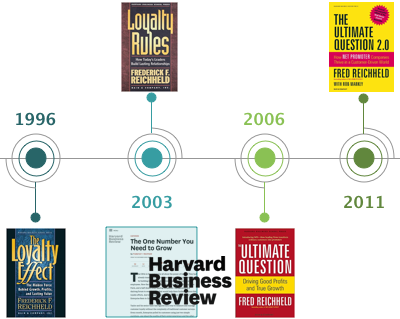
Realizing the limitations of the traditional approach to customer surveys – highly complex, lengthy, labor-intensive (cross-departmental inputs), and the low response rates leading to modest or unreliable insights – Fred Reichheld and his team of consultants embarked on a quest to downsize the customer survey. This quest entailed finding a single question that would unearth a similar amount of insights as its lengthy and unwieldy customer survey counterpart and whose answer would somewhat be predictive of a company’s revenue growth.
The research project culminated in the paper The One Number You Need to Grow published in the Harvard Business School review in 2003. It summarized the findings and revealed the now extremely popular survey question “How likely is it that you would recommend our company/product/service to a friend or colleague?” and its associated Net Promoter Score.
The success of the paper, and the rapid adoption of the Net Promoter Score across organizations globally, encouraged the team to further develop the metric into a broader management model. Fred Reichheld and his disciple Rob Markey published subsequently two books: The Ultimate Question: Driving Profits and True Growth, in 2006 and The Ultimate Question 2.0: How Net Promoter Companies Thrive in a Customer-Driven World in 2011.
Types of NPS Programs
When it comes to NPS surveys, the most widely recognized categories are Relational NPS surveys and Transactional NPS surveys. By deploying both Relational and Transactional NPS programs, businesses can gain a holistic perspective that informs strategic decision-making and ensures a nuanced approach to customer experience management. Let’s delve into each type to uncover their unique advantages and applications.
Relational NPS surveys are sent out regularly, typically on a quarterly or annual basis . The goal is to get a periodic feel for what your customers think in regards to your company. The data can be used to check how well the company is doing and provide a benchmark to evaluate year-over-year success.
Transactional NPS surveys on the other hand, are sent out after the consumer interacts with your company in some way. It helps a company understand the level of customer satisfaction on a more granular level. To get a full picture of how your consumers feel it is best to use both transactional and relational net promoter score programs.
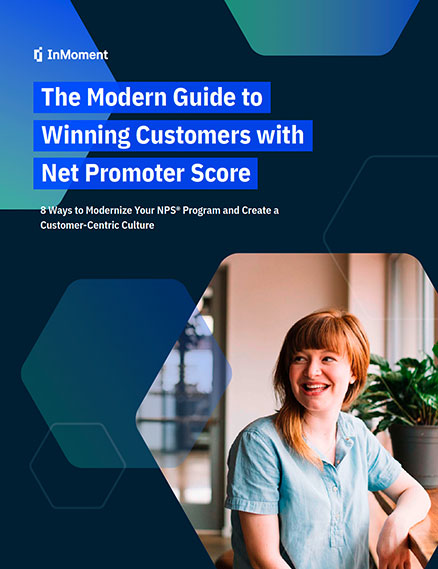
GUIDE
The Modern Guide to Winning Customers with Net Promoter Score
8 Ways to Modernize Your NPS Program and Create a Culture of Customer Happiness
How Is Net Promoter Score Calculated?
A Net Promoter Score survey asks a single question, “How likely are you to recommend this product or service?” and a customer responds on a scale of 0-10.
The Net Promoter Score Formula is equal to the percentage of promoters minus the percentage of detractors. Promoters are customers who answered 8 or 9 to the NPS question, and detractors are customers who gave an NPS score of 0 to 6 to this same question. Understanding nps calculation is crucial to having a successful NPS program.
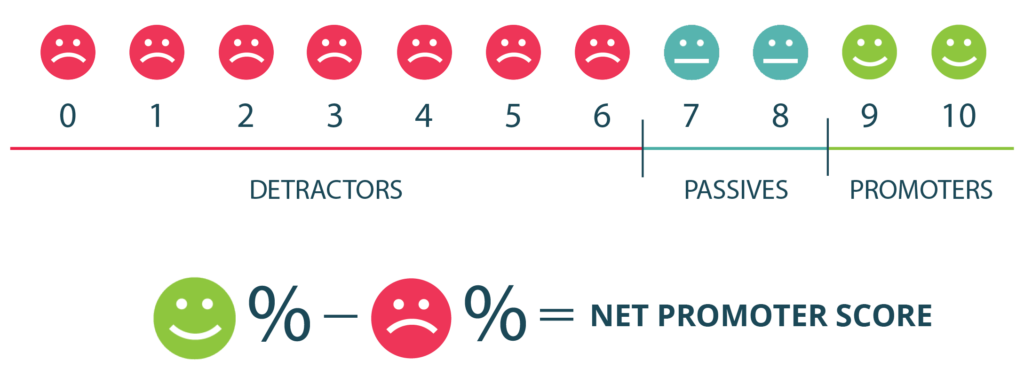
What Is a Good Net Promoter Score?
A +50 NPS, would mean that the company has more than 50% promoters and less than 50% detractors. Any score above 50 is then probably good. Benchmarking is popular, but it is best to focus on continual improvement of your own Net Promoter Score. Defining a good NPS score also relates to where your business currently stands, and what you are trying to achieve.
How Do You Improve Your Net Promoter Score?
There is no shortcut to improving your Net Promoter Score. In order to improve NPS, you need an effective customer experience strategy, proactive measures and a commitment to continuous improvement. Here are five things you can start doing to improve your NPS:
1. Understand Customer Feedback
Start by thoroughly analyzing customer feedback. Whether positive or negative, every comment holds valuable insights into what customers appreciate and where improvements can be made. Use this understanding as the foundation for your improvement initiatives.
2. Address Detractor Feedback Promptly
Detractors, customers who give low scores, are an immediate priority. Identify common issues raised by Detractors and develop strategies to address them promptly. Demonstrating a commitment to resolving customer concerns can turn Detractors into satisfied customers.
3. Celebrate and Amplify Promoters
Promoters are your brand advocates, and their positive feedback is invaluable. Acknowledge and appreciate Promoters by amplifying their testimonials, featuring them in marketing materials, and expressing gratitude. This not only strengthens customer relationships but also attracts new customers through positive word-of-mouth.
4. Implement Customer Suggestions
Act on actionable suggestions provided by customers. If multiple customers highlight a specific area for improvement, consider it a strategic opportunity to enhance your offerings. Implementing customer-driven changes demonstrates responsiveness and a commitment to delivering what your audience truly values.
5. Personalize Customer Experiences
Tailor your interactions to individual customer preferences and needs. Leverage data and analytics to understand customer behavior, history, and preferences. Personalized experiences contribute to a positive perception of your brand, fostering loyalty and increasing the likelihood of receiving higher NPS scores.
How to Create an Net Promoter Score Survey
There are several ways you can put together an NPS survey, each one having certain pros and cons associated with it. You can use a downloadable template, but oftentimes those are not tailored to your exact format or needs. Using survey software allows you to create your survey much faster, but sometimes that software will only measure one metric at a time. There is also NPS-specific software or customer experience management platforms that you can use in many cases. Our NPS software allows you to get instant NPS analytics. As far as the process goes when creating an NPS survey, let’s break it down into what questions you should ask:
Demographic Questions
As with any survey, you should make sure to begin by covering any demographic and questions that you may find relevant or would help provide you with additional insights. Should you choose to segment your data eventually, you will need demographic information to do so. Be careful not to spend too much time on the demographic section of your survey, in case your participants get frustrated they haven’t gotten to the topic soon enough, or feel you’re prying too much into their personal lives. Keep your survey brief, but make sure you gather the information you need.
Your Net Promoter Score Question
The main question asked in your survey is how likely are they to recommend the business or product on a scale of 1 to 10.

Your Reasoning For Your Score
This is your opportunity to let your survey respondents give a short answer in their own words to explain their score. It may be wise to limit the number of characters your participants can use here so that you don’t end up scrubbing through paragraphs of responses for a lengthy amount of time. While reading through these brief responses, try to gather the promoters and detractors for your research. If you want to scrub through responses faster, you can try using a text analysis tool.
What Could Have Improved Your Experience
This question has the potential to be redundant for your survey respondents, so be sure to use it only where you see fit. Oftentimes when someone gives a reason for their score (as listed in the previous paragraph), they’ll explain what they wanted improved in their short answer. When you feel you need more information, you can gather that using this question.
Permission to Follow Up With the Customer
Oftentimes when doing research, you’ll want the option to be able to contact any survey respondents with follow-up questions or additional information. For this reason, it’s wise to ask your survey respondents if it would be okay for you to contact them in the future. While some participants will likely say no, you may gather a handful who don’t mind continuing a discussion on your survey topic.
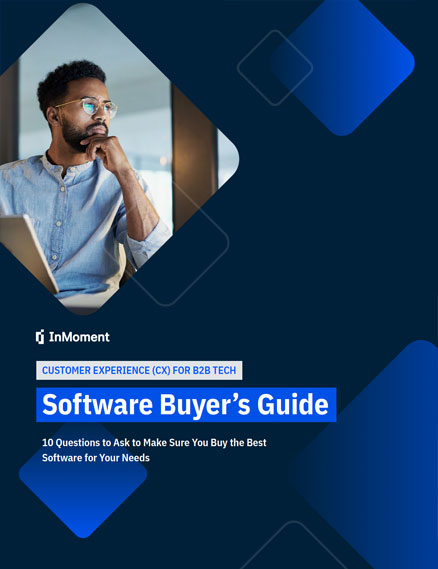
GUIDE
The Net Promoter Score Software Buyer’s Guide
Choosing the right Net Promoter Score software is an important decision—but it’s no easy feat.
There are many tools and solutions to choose from, all of which have varying features — it can all be overwhelming. Luckily, there are ways to determine if a Net Promoter Score solution is right for you. Download this free guide and uncover the key questions to ask when evaluating a vendor.
Net Promoter Score Survey Methods—Email NPS or In-App NPS?
When it comes to gathering customer feedback for your Net Promoter Score, there are a number of different options to consider. Before we address which survey method is best for your business, let’s look at what email NPS and in-app NPS surveys look like.
Example of NPS Email Survey
InMoment offers many CX integrations including NPS email templates that enable you to send surveys directly from your favorite email provider or CRM (like MailChimp or Marketo.) Results appear in your InMoment dashboard.
In general, respondents are more likely to leave qualitative feedback in an email survey vs. in-app respondents.
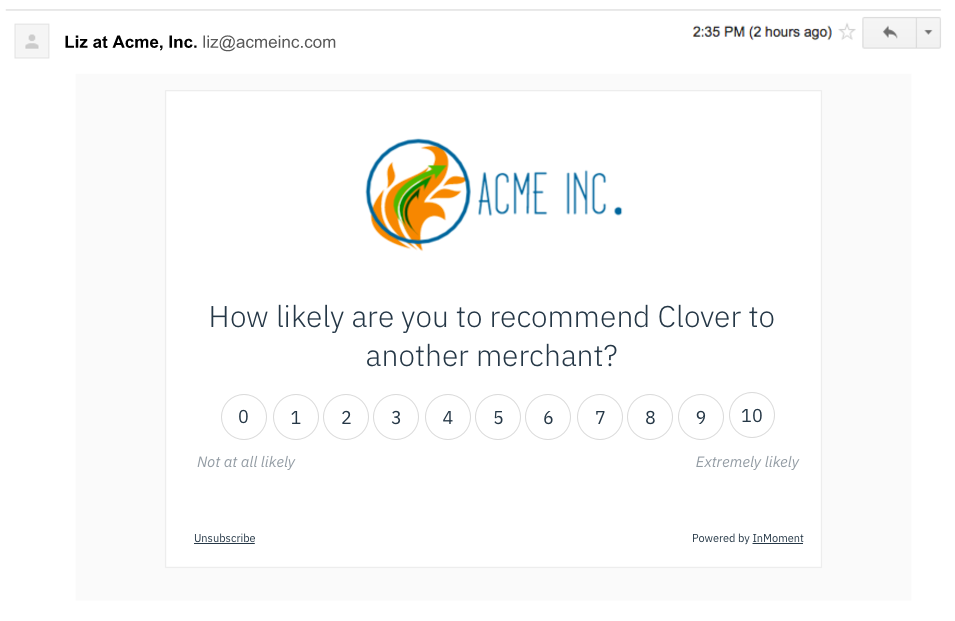
NPS In-app Survey Example
InMoment in-app surveys appear when customers are on your website or logged into your SaaS product or mobile app. Set-up requires adding a Javascript snippet or SDK to your application. In-app NPS surveys generally attain much higher response rates than email NPS surveys.
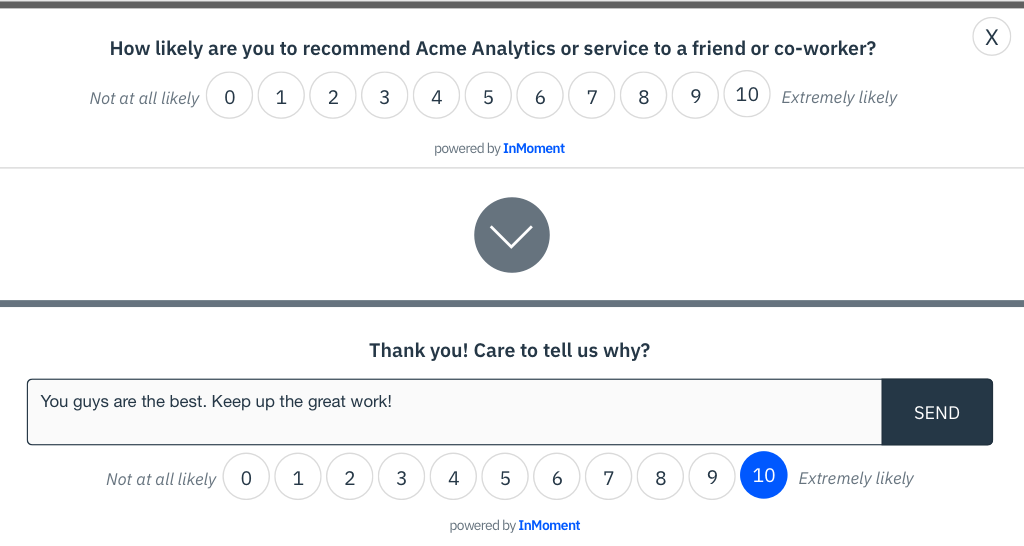
How Often Should I Send NPS Score Surveys?
Determining the frequency of NPS surveys is a crucial aspect of maximizing the utility of this valuable metric while respecting your customers’ time and attention. Striking the right balance ensures that you receive timely feedback without causing survey fatigue. Consider the following factors when deciding how often to send NPS surveys:
1. Transaction Frequency
Align the frequency of NPS surveys with the frequency of customer transactions. For businesses with frequent customer interactions, such as e-commerce platforms or subscription services, more regular surveys may be appropriate. Conversely, for businesses with less frequent transactions, a less frequent survey schedule may be sufficient.
2. Customer Lifecycle Events
Tie NPS surveys to key events in the customer lifecycle. Sending surveys after significant touchpoints, such as a purchase, customer support interaction, or product usage milestone, provides contextual feedback. This targeted approach allows you to capture insights when the customer’s experience is most relevant.
3. Product or Service Changes
Introduce NPS surveys when there are substantial changes to your product or service. This could include the launch of new features, updates, or modifications to existing offerings. Monitoring NPS during these periods can help gauge customer reactions and identify areas that may require further attention.
4. Seasonal Considerations
Take into account seasonal variations in your business. Some industries experience peak seasons or specific periods of increased customer activity. Adjust your survey frequency to align with these patterns, ensuring that you capture feedback when it is most representative of customer experiences.
5. Strategic Planning Cycles
Incorporate NPS surveys into your strategic planning cycles. Conduct surveys at intervals that align with your business planning and decision-making processes. This allows you to use NPS data to inform strategic decisions and track the impact of initiatives over time.
There is no one-size-fits-all answer to how often you should send NPS surveys. It depends on your specific business context, customer interactions, and strategic objectives. By thoughtfully considering these factors, you can establish a survey cadence that maximizes the benefits of NPS while respecting your customers’ experience.
Which Is the Best NPS Method?
What should you use—email, in-app (or even SMS) NPS surveys? This depends entirely on your business model. It’s best to engage your customers where they are. Where are they expecting to hear from you? Where are they most likely to respond? Learn how to choose the best customer feedback channel for your customer base.
How You Can Utilize Your Net Promoter Score?
An NPS score provides a metric to track and it allows you to monitor improvements in customer satisfaction. By running a key driver analysis, you can identify the context that helps you understand what is the biggest driver of your NPS score, allowing you to prioritize improvements in that particular area. You also find that key drivers differ depending on age groups or genders. This allows you to adapt your approach to different target audiences so that can have the best possible experience with the brand and company
How to Analyze NPS Scores
Analyzing Net Promoter Scores (NPS) goes beyond simply calculating the number; it involves a thoughtful examination of customer sentiments and the factors influencing their experiences. Here’s a step-by-step guide on how to effectively analyze NPS scores:
1. Segmentation for Deeper Insights
Start by segmenting your NPS data to gain more granular insights. Break down the scores based on customer demographics, product or service usage, or any other relevant criteria. This segmentation allows you to identify specific areas for improvement and tailor strategies to different customer groups.
2. Understand the Distribution
Analyze the distribution of Promoters, Passives, and Detractors within your customer base. A skewed distribution towards Promoters is positive, while an overrepresentation of Detractors signals potential issues. Understanding the balance provides context for interpreting the overall score.
3. Focus on Detractors
Prioritize the analysis of Detractors as their feedback indicates areas that need urgent attention. Identify recurring issues, address them systematically, and use the feedback as a roadmap for improvement. Turning Detractors into satisfied customers can have a significant positive impact on your NPS.
4. Analyze Verbatim Feedback
Dive into the qualitative feedback provided by customers alongside their NPS scores. Pay attention to common themes and specific comments. This qualitative data provides context for the numerical scores and helps identify specific pain points or areas of excellence.
5. Link NPS to Operational Metrics
Connect NPS data with operational metrics such as customer retention, conversion rates, and revenue. Analyzing these correlations helps establish a direct link between customer satisfaction and key business outcomes, reinforcing the importance of customer-centric strategies.
The more data that can be developed along with the NPS score, the more you’ll be able to understand about your customer and what influences their opinions and feelings.
In the end, the goal of your NPS is to measure the likelihood of gaining new or renewed business. To read your NPS results, you’ll look at your score, ranging from -100 to +100, determine whether or not it’s what you’re looking for, then take that information and see where you can improve.
When reading NPS graph results, you’ll typically break each variable into promoters, detractors, and neutral units, then monitor how they change over time.
How to Show NPS Score to Leadership
Effectively communicating Net Promoter Scores (NPS) to leadership and C-suite executives is crucial for driving strategic decisions and reinforcing the importance of customer experience (CX) within the organization. Here’s a guide on how to present NPS scores to leadership in a way that highlights opportunities for improving your CX strategy:
1. Contextualize NPS Benchmarks
Provide context by benchmarking your NPS against industry standards or competitors. This comparison helps leadership understand where your organization stands relative to others in the market and highlights areas for improvement or potential competitive advantages.
2. Link NPS to Business Outcomes
Clearly articulate the connection between NPS and key business outcomes. Demonstrate how improvements in NPS can lead to increased customer retention, higher conversion rates, and ultimately contribute to revenue growth. This linkage reinforces the strategic impact of a strong CX strategy.
3. Highlight Positive Trends and Successes
Showcase positive trends in your NPS scores over time. If there are specific initiatives or improvements that have positively impacted customer satisfaction, highlight them. This emphasizes the organization’s commitment to continuous improvement and the success of CX-focused strategies.
4. Emphasize the Voice of the Customer
Use verbatim feedback from customers to convey the voice of the customer. Share specific comments, both positive and negative, to provide qualitative insights into customer sentiments. This humanizes the data and helps leadership connect with the real experiences of customers.
5. Align NPS with CX Goals
Align the NPS presentation with broader CX goals and initiatives. Clearly articulate how improvements in NPS contribute to the achievement of CX objectives and reinforce the organization’s commitment to delivering exceptional customer experiences.
6. Provide Actionable Recommendations
Accompany the NPS presentation with actionable recommendations for improvement. Clearly outline steps that can be taken to address identified issues and capitalize on strengths. This proactive approach demonstrates a commitment to turning feedback into tangible actions.
7. Demonstrate the Value of NPS
Clearly communicate the value of NPS as a leading indicator of customer satisfaction, loyalty, and business growth. Help leadership understand that NPS is not just a metric but a strategic tool that can guide decision-making and drive positive organizational change.
Presenting NPS scores to leadership is not just about sharing numbers; it’s about telling a compelling story that emphasizes the strategic importance of customer experience. By following these guidelines, you can effectively convey the significance of NPS and drive a customer-centric mindset throughout the organization.
Improve Your NPS with InMoment
As part of an integrated CX solution, InMoment’s XI Platform excels in gathering and presenting NPS data in a valuable way. Schedule a demo to see how we can help you improve your NPS score today!

